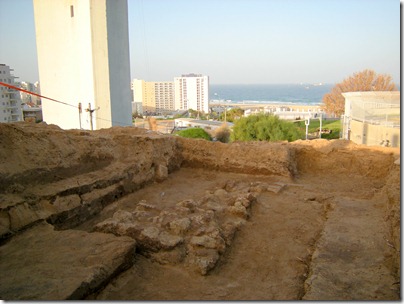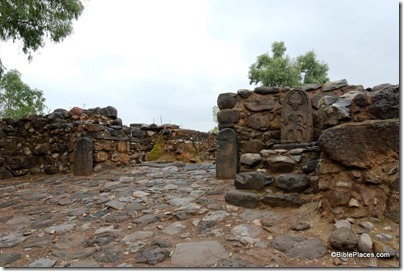Attempts to sensationalize this story by connecting it to the prophet Jonah should not be allowed to obscure the significance of a fortress recently uncovered in Ashdod. The Israel Antiquities Authority (IAA) press release blows it on all things “Jonah.”
At ‘Giv’at Yonah’, in Ashdod, Archaeological Finds were Uncovered that Verify the Existence of Life there at the Time of Jonah the Prophet
The foundation of a large fortress that was situated there during the First Temple period was exposed in an excavation the Israel Antiquities Authority conducted with funding provided by Hofit – Ashdod Development & Tourism Company, Ltd.
At ‘Giv’at Yonah’ (the Hill of Jonah) in Ashdod, which according to various traditions is identified with the burial place of the prophet Jonah, archaeological finds were exposed that verify the existence of life there during the First Temple period, at the time of this prophet.
In a trial archaeological excavation the Israel Antiquities Authority carried out on ‘Giv’at Yonah’ in Ashdod prior to development work by Hofit –Ashdod Development & Tourism Company, Ltd. remains of massive walls more than 1 m wide were found that are dated to the late eighth century and early seventh century BCE.
In the estimation of the excavation director, Dmitri Egorov, of the Israel Antiquities Authority, these walls constituted the base of a large building from the First Temple period, the time when Jonah the prophet was active, who lived in the eighth century BCE and was famous for having been swallowed by a fish after he refused to “go to Nineveh…and proclaim against it” (Jonah 1:2).
One can understand why a news organization would try to hype this discovery and in the process distort the data, but it is disturbing that a scientific governmental organization such as the IAA would fail to get basic historical and geographical facts right.
1. The IAA gets the chronology wrong. Jonah was a prophet in the first half of the 8th century, during the reign of Jeroboam II (793-753 BC). This fortress dates to the late 8th and early 7th centuries.
Thus the claim made in the headline and throughout the story is false. This should be clear later in the press release when the district archaeologist states that the fortress belonged either to the Assyrians or to the Judean king Josiah (640-609 BC).
2. The IAA gets the geography wrong. Jonah was a prophet in the northern kingdom, from the Galilean city of Gath-hepher (2 Kgs 14:25). He fled on a ship via the port at Joppa. There is no
evidence that he ever traveled to Judah or to the territory then controlled by the Philistines.
3. The IAA fails to note the value of the “various traditions” that identify the site as the “Hill of Jonah.” There is no Jewish or Christian tradition that Jonah was buried here. Only a decade ago did
“Atra Kadisha” identify it as the tomb of Jonah. It is relevant that the purpose of Atra Kadisha is to prevent the excavation of ancient Jewish tombs. The Atra Kadisha declaration follows a Muslim tradition, which is much too late to be taken as having historic value.
What is important in this story is the discovery of a fortress apparently from the time of Hezekiah when the Philistines were caught in a bit of a tug of war between Judah and the Assyrians. For more details, see Sennacherib’s Siege of Jerusalem in Context of Scripture 2.119B.



